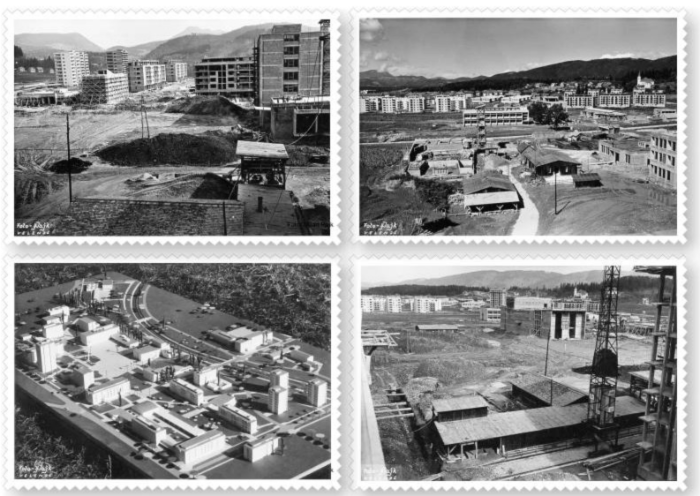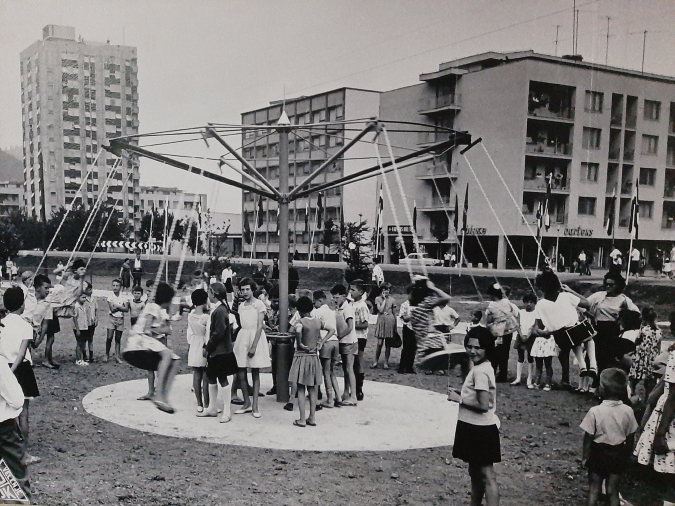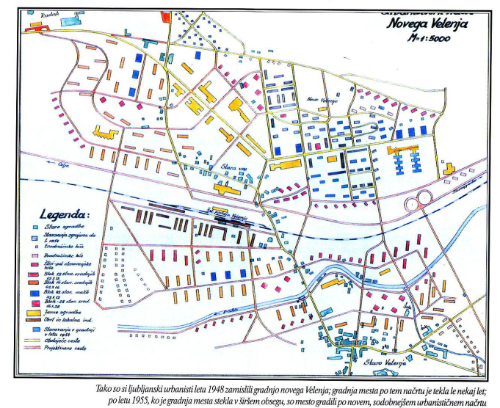|
|
Velenje (Wöllan), Slovenia, Europe |
|
|
|
|
|
|

Velenje
source: velenje.si

Velenje in socialist
times, photo from
exposition in Velenje,
februari 2020 (Marco
Bontje)
source:
|

"Velenje began like many towns in the late Middle Ages, as a market town near a castle. Velenje remained a small market town until the mid-20th century. Already in the 18th century, the thick layer of lignite near the town was discovered. From 1875, the 'birth year' of Velenje's coal mine, the mine became an increasingly important part of the town's economy. Velenje's rapid post-war development fitted in well with Yugoslav economic policy: industrialisation, with a leading role for heavy industry. Velenje became a two-company town. Apart from the coal mine (and the power station connected to it), the second economic pillar was, and is, Gorenje, founded in 1950. Gorenje could be seen as a Slovenian version of Philips old-style: it is mainly big in household appliances.
Around the mine and factory complex, the 'socialist model town' Velenje was built. As in many socialist building projects, modernism and the garden city were the main starting points of the design. The buildings consist mainly of flats, from low-rise blocks of four storeys (see photo at top) to towers of 15 to 20 storeys, with shops and other public functions on the ground floor in the city centre. A central axis between these buildings leads to the city centre and Titov Trg. Around the buildings and streets there is a lot of space for green: Velenje is designed as 'the city in the park." (Bontje,2020)
source: Bontje, M. (2020) "Velenje: ‘socialistische modelstad’ in zwaar kapitalistisch weer" article on geografie.nl |
|
2008 - 2024 disclaimer
|

